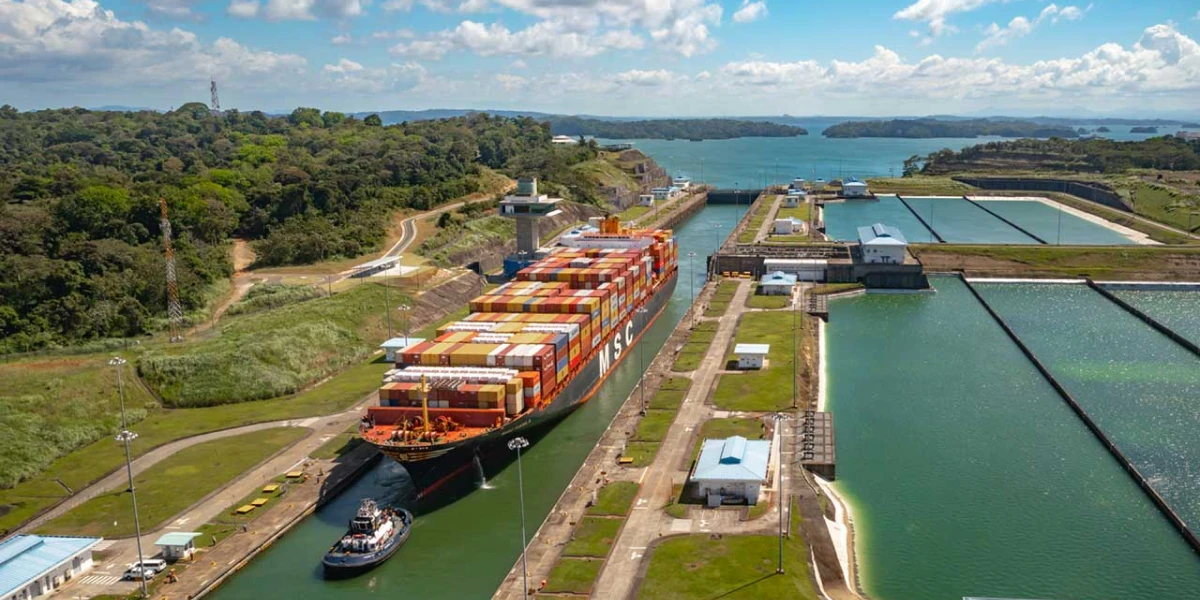Global supply chain is under threat as the holiday season approaches. Depleted water levels are leading to shipping delays in the Panama Canal. The average wait time for non-booked vessels has risen over 40% with reduced cargo as low water levels cause restrictions on daily transits & ship drafts.
Waiting time averaged 8.85 days for south-bound transit & 9.44 days for north-bound passage in August, from 5.56 days & 6.55 days respectively, in July, according to Panama Canal Authority. Only 32 vessels with draft up to 44 feet are now allowed to pass every day (vs 36 ships/50 ft draft normally). The limitations have led to bottlenecks & pushed freight tariffs, said Reuters.
5-6% of global trade passes through Panama Canal; one of the busiest with 14,000 ships per year, it reduces distance/travel time from New York to Los Angeles from 12,350 NM/30-35 days to 4,970 NM/10-14 days, and from Shanghai to New York from 19,000 mi/35-40 days to 12,000 mi/22-25 days.
The Canal, an engineering marvel, completed in 1914 by the US (earlier effort by France was abandoned) revolutionized global trade by allowing ships to transit between the Atlantic & Pacific Oceans w/o navigating the violent waters around the southern tip of South America. It uses a system of locks & large chambers of water filled/emptied to raise/lower a ship as it enters/exits the canal. A ship takes 8 to 10 hours to transit through the canal.
As Suez Crisis in March 2021 (caused $9.6 bn loss to global trade) demonstrated, any closure of the Panama Canal can lead to the diversion of routes, increased freight costs, supply chain disruptions & price increases (TVs, computers, plastics, machinery, toys, furniture, cars, oil, bananas, scrap, cotton, sugar, soya, chicken etc); it would adversely impact companies using the canal. These crises underline the need for more & better shipping routes. Fortunately, both are investing heavily in capacity expansion, safety, navigation & environmental improvements.
New ideas are also emerging. A proposed Nicaraguan Canal connecting the Atlantic to the Pacific would take $50 billion and 10 years to build. Asia-Middle East-Europe Corridor (AMEEC) connecting Indian ports to Europe via transport corridors in the Middle East can be a game changer.
The Panama Canal crisis has highlighted how the global trade system is vulnerable to changing climate. The ever-rising thirst for goods is crashing into the reality of climate change, says CNN.





